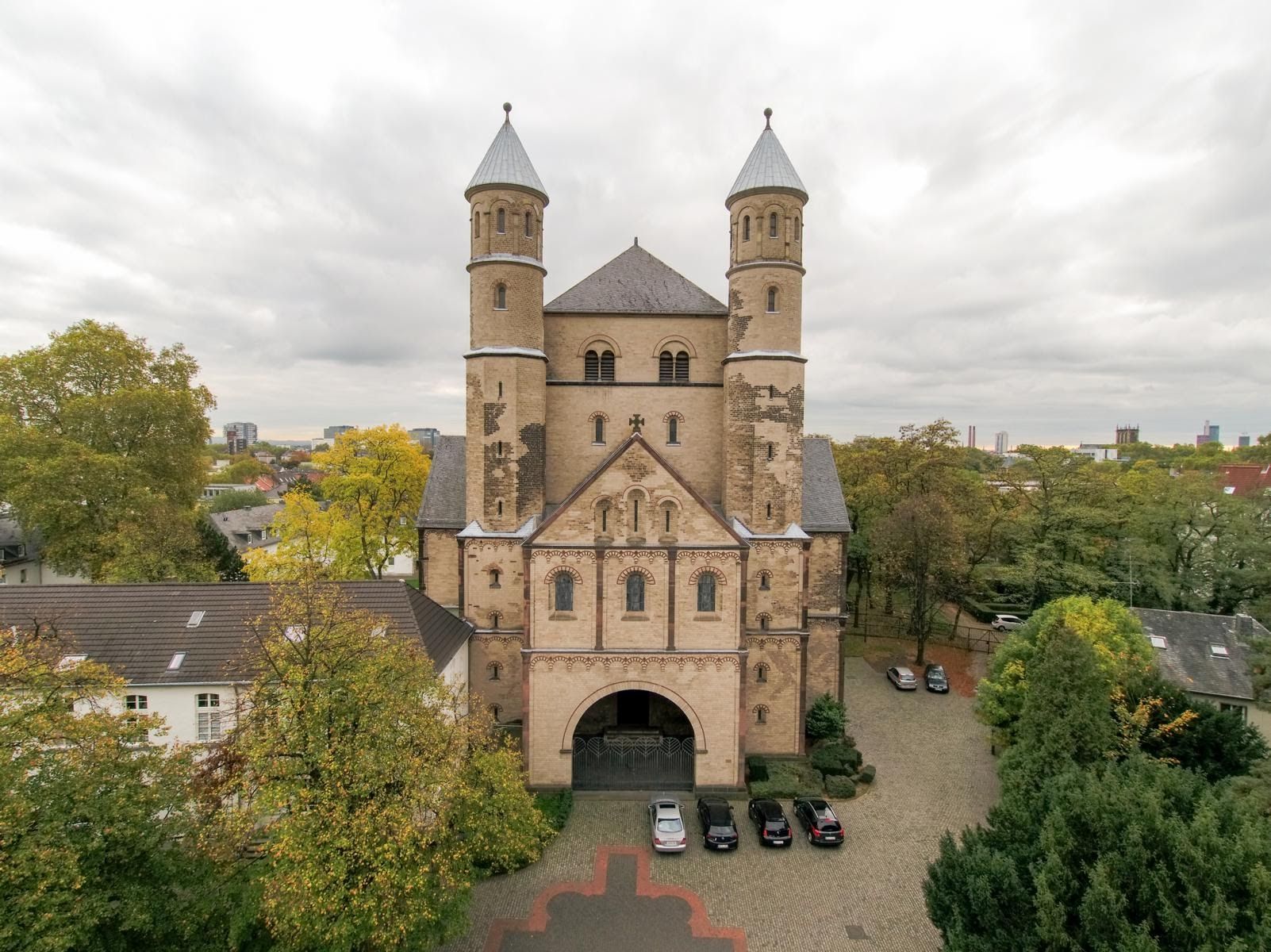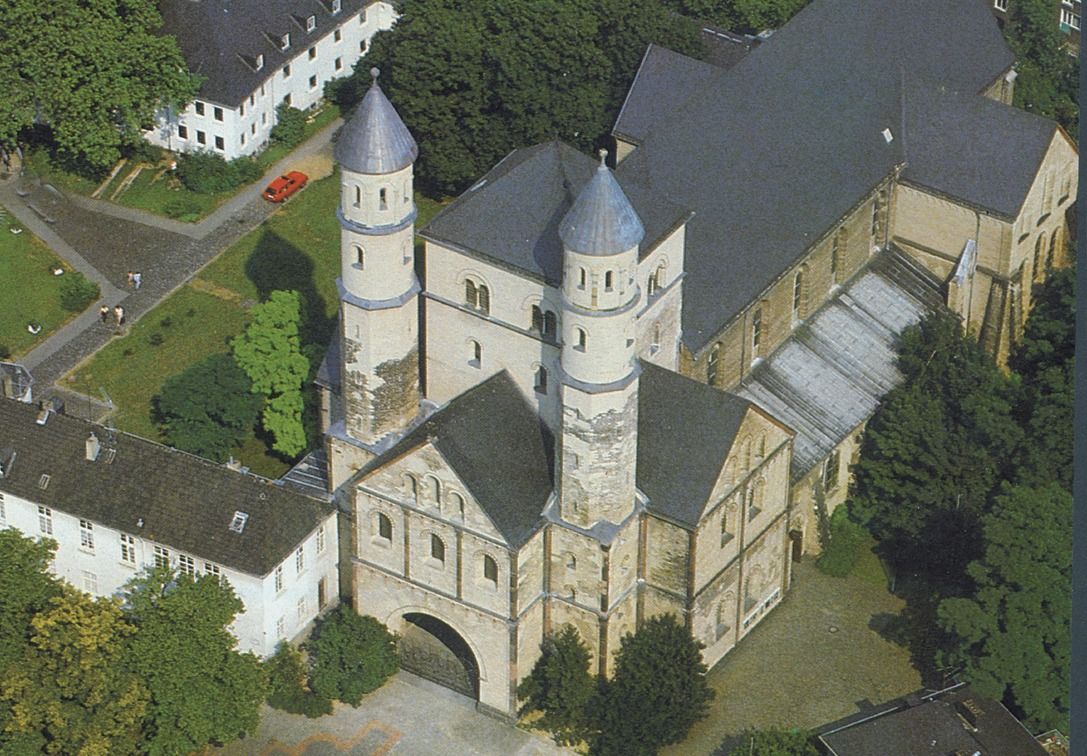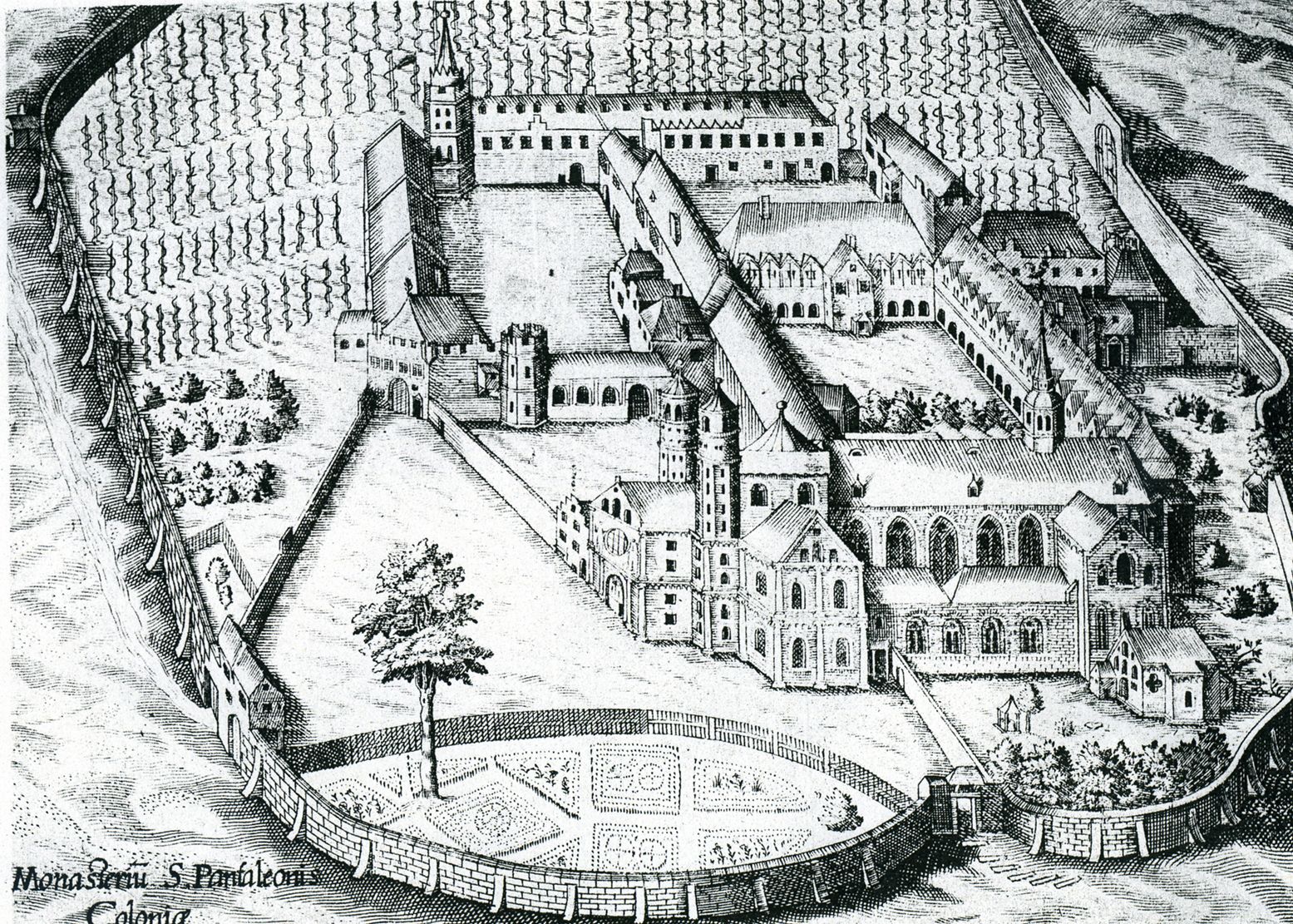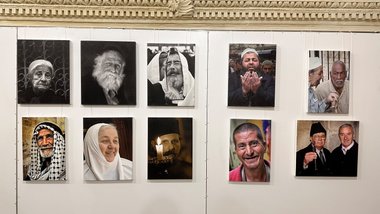"Unity despite division". On Kyiv's ties with the Benedictine Abbey of St. Panteleimon in Cologne

The first mention of St Panteleimon's Church in Cologne dates back to 866. In 955, Archbishop St Bruno I the Great of Cologne (925-965) founded the Benedictine monastery of St Panteleimon, which soon became an important spiritual and cultural centre in the region. Under Emperor Otto II (955-983) and his wife, Empress Theophano (ca. 960-991), the monastery church was richly decorated and received various relics as gifts, including a part of the relics of St Panteleimon and a part of the relics of St Nicholas the Wonderworker brought from Constantinople.

Written sources show that the wife of the Grand Prince of Kyiv Volodymyr II Monomakh (1053-1125) and the mother of the Kyivan Prince St Mstyslav I the Great (1076-1132), Gytha of Wessex, who was the daughter of the last Anglo-Saxon King of England, Harold II, maintained close ties with this monastery.
An amazing story about the connection between Volodymyr Monomakh's wife and the Panteleimon Monastery in Cologne is told by Father Rupert (1075-1129), a monk of this monastery, a German theologian, and later the abbot of the monastery in Deutsch near Cologne, who apparently knew Princess Gytha personally. His work, known as "The Eulogy of Saint Panteleimon," was written in the late 11th and early 12th centuries. It has come down to us in a list from the second half of the 12th century and is now preserved in the Historical Archives in Cologne (Historisches Archiv Koeln, cod. Wallraf. 320). Another list of the 12th - 13th centuries from the manuscript collection Liber Bibliothecae s. Pantaleonis (in particular, part of it, Miracula S. Pantaleonis martyris) was kept in the Düsseldorf archive and burned down during the bombing of the city in the 1940s, but before that it was published in Acta sanctorum. Oleksandr Nazarenko devoted a separate study to these literary monuments.

In his work, Father Rupert reports on generous donations to the Cologne monastery from the wife of Volodymyr Monomakh, prompted by the tragedy of their son Prince Mstislav (Harald), who almost died during a hunt and was cured only after Gytha's prayers to St Panteleimon.
From Father Rupert's story (in the section on the miracle of "Harald, King of the People of Rus") we learn that during the hunt a bear tore open Mstyslav's stomach so that his insides fell out. He was near death. The wounds were so serious that there was no hope that Mstyslav would survive. Princess Gytha spent the whole night at the bedside of her unconscious and dying son, praying to St Panteleimon the Healer. In the morning, the prince suddenly regained consciousness and said that in his dream a young man had appeared to him, who "gave his name, Panteleimon, adding that his favourite home was in Cologne". According to the story, this young man, who looked very much like St Panteleimon, then came to the sick man with healing potions in reality and cured him. After that, Gytha donated a large sum of money to the Cologne monastery as a thank you and vowed to make a pilgrimage to Jerusalem.
Rupert adds about Princess Gytha that "she, by her generosity, was even earlier honoured to become a sister in that holy monastery of his name, which serves Christ in Cologne." In the monastery's memorial synodical book, which has been preserved in two parchment lists, there is a record of her death under "10 March", which may also indicate a connection with the Cologne Monastery on the part of both "Queen Gytha" and her descendants from Kyiv.
The healing of Mstyslav Volodymyrovych described by the German monk Rupert took place in the 1090s (Oleksandr Nazarenko called it 1097), forty years after the official break between the Roman and Constantinople churches (1054). Thus, despite the separation between the Western and Eastern Churches, Kyivan Rus, which was under the jurisdiction of the Patriarchate of Constantinople, continued to maintain close contacts with the centres of spirituality of the Western Church, particularly in Cologne.

After the incident described above, Prince Mstyslav began to especially venerate St Panteleimon, and he named his newborn son Izyaslav (ca. 1097-1154) in his baptism in his honour. Since then, the veneration of St. Panteleimon as a healer in Kievan Rus was combined with his veneration as the patron saint of the princely dynasty and the Kyivan Rusyn warriors. Later, after his death, the veneration of Mstyslav himself spread, and he was canonised as an Orthodox saint no later than the thirteenth century.
Around the same time, an image of St Panteleimon probably appeared in the princely tomb of the most important church of Kyivan Rus, St Sophia of Kyiv. It is located above the tomb of Mstyslav's great-grandfather, the Holy Prince Yaroslav the Wise, and is a depiction of the holy healer holding a vial of oil.
Mstyslav's heir, Izyaslav–Panteleimon, had a particularly deep respect for his heavenly patron. When he became the Grand Duke of Kyiv, he forged an image of St Panteleimon on his helmet and, according to legend, was saved from certain death by his intercession in the battle of 1151. In 1134, Izyaslav built the first monastery of St Panteleimon near Novgorod, the first in Kyivan Rus.
It is an interesting fact that Prince Izyaslav arranged the uncoordinated (in fact, autocephalous) elevation of Clement Smolyatych to Metropolitan of Kyiv and All Rus' on the day of St Panteleimon's memory, 27 July (old style) 1147, without the consent of the Patriarch of Constantinople. After the prince's death, Clement left the Kyivan see in 1155 and went to Mount Athos in 1164. There is reason to believe that it was not without his assistance that the monastery of St Panteleimon, known since then as “Rusyk” or “Rosykon”, was purchased for a colony of Kyivan Rusyn monks on Mount Athos in 1169. Thus, the transfer of the Panteleimon Monastery on Mount Athos to Rusyn monks in 1169 is likely to be related to the efforts of the descendants of Mstyslav and Izyaslav, who continued to establish the cult of veneration of St Panteleimon in Kievan Rus.
It is known that Izyaslav's grandson, Roman Mstyslavych Halytskyi (1150-1205), the first Prince of Galicia-Volhynia and Grand Duke of Kyiv, built a country princely residence and the Panteleimon Monastery with a majestic stone cross church in honour of St. Panteleimon in 1194 on the entrance to Ancient Halych, on Vynohradna Hill. During the reign of Izyaslav's great-grandsons, Grand Dukes Danylo Romanovych Halytskyi (1201-264) and Vasylko Romanovych Volynskyi (1203-1269), the tradition of building churches in honour of St Panteleimon continued in Volyn.
Thus, one of the largest shrines in Cologne, the Panteleimon Monastery, is directly related to the Kyivan princely dynasty of Mstyslavych (Monomakhovych). Thanks to the connections with this monastery, the cult of St. Panteleimon spread in Kyivan Rus, which influenced the construction of a number of monasteries and churches in honour of this saint, and in 1169 a separate monastery of St. Panteleimon was purchased for a colony of Kyivan Rusyn monks on Mount Athos.
The history of relations with the Cologne monastery is an important page in the centuries-old Ukrainian-German historical, spiritual and cultural ties that have united our peoples through the centuries. At the same time, they are a testament to the continuing unity of Western and Eastern Christians, even despite the separation and mutual "anathemas" between the official church leadership of the Western and Eastern churches. This monastery should rightfully be one of the centres of pilgrimage for Ukrainian pilgrims (both Greek Catholics and Orthodox), as it and its shrines are directly related to Ukraine.
About autor: Dr. Serhii SHUMYLO, Ph.D. in history, Doctor of theology (Th.Dr.), Director of the International Institute of the Athonite Legacy; Research Fellow in the Department of Classics, Ancient History, Religion and Theology, University of Exeter (UK); Research fellow of the Institute of History of Ukraine, National Academy of Sciences of Ukraine










